Buddhism is an important thing in the lives of most Vietnamese (it is the dominant spiritual tradition) and even people who aren’t particularly religious find themselves in temple at least a couple of times a year. Others, like me, are much more interested and engaged and can find ourselves at temple a lot more often. In my case, sometimes three or four times a day, writes Walter Mason, noodlies, Sydney food blog contributor.
The tradition of the preparation of vegetarian food is a long and proud one in Vietnam, and I have observed that Vietnamese Buddhist vegetarian cuisine is tastier and more joyfully prepared than its cousins in China, Taiwan and Korea. The Vietnamese love eating, and even a tradition of renunciation can’t stop them from making a special effort to prepare food that delights and surprises. I have never had a dud meal in a Vietnamese temple.
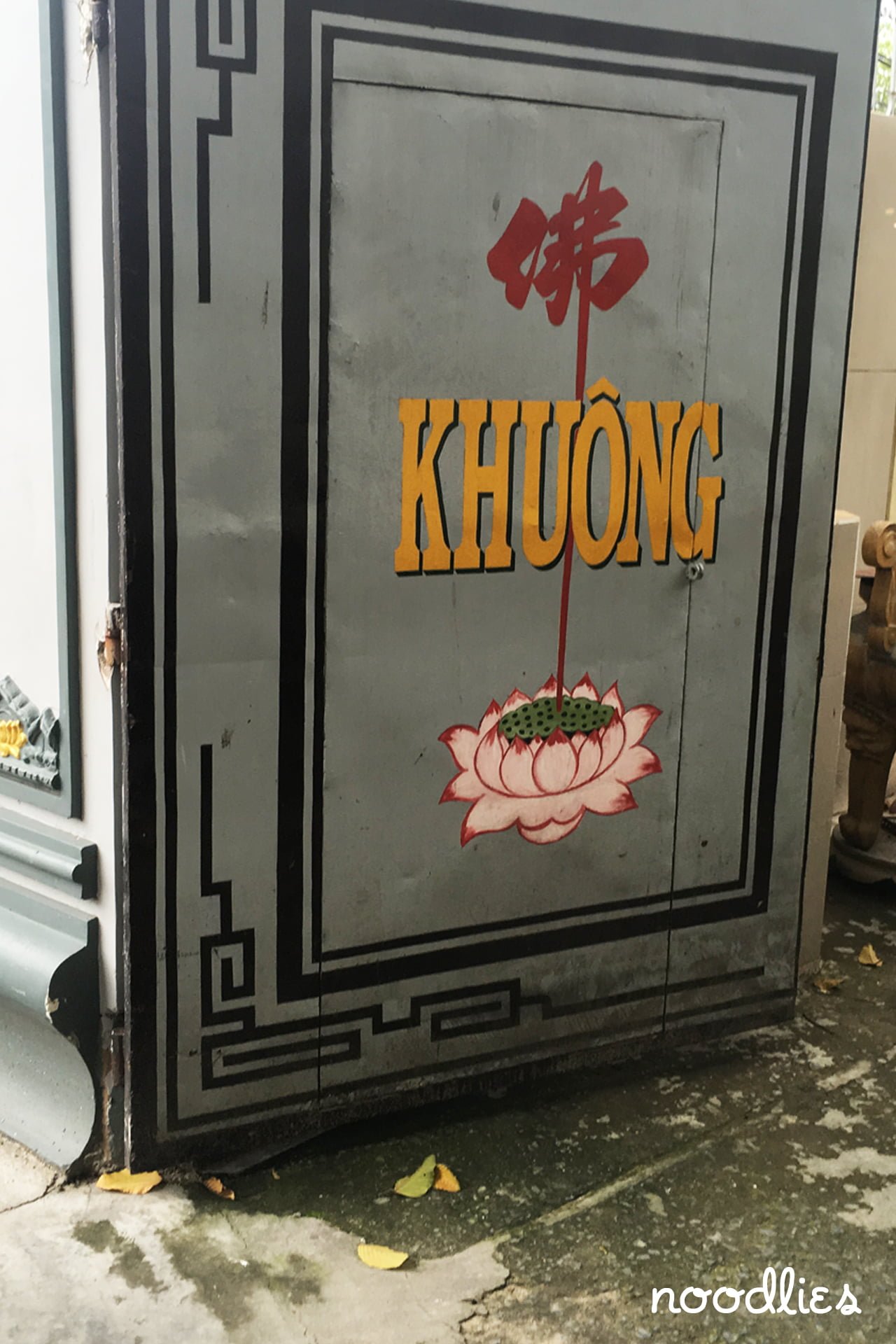
Recently I was at Khuong Viet Temple in the suburbs of Ho Chi Minh City. This temple is worth visiting for a number of reasons. It is situated in a vibrant and fascinating neighbourhood (OK, I admit it’s my own neighbourhood) and it is also one of the only places in Vietnam dedicated to the study of Vajrayana Buddhism, a tradition that is very rare indeed in Vietnam.
The Master of the temple died recently, and as part of the period of memorialisation there has been a series of banquets served for free to worshippers and visitors. This period of observance was sponsored each day by a different family or benefactor, but for the entire period a vegetarian chef was engaged (a very handsome one in this case) and a semi-permanent catering operation was established at the temple for a designated period.
Sunday lunch was always the biggest event during this period. Many temples in Vietnam observe a Sunday-worship structure borrowed from Catholicism and it’s increasingly convenient as people work more standardised hours and have the weekends off. It was a huge event when I was there, with a couple of hundred worshippers staying after prayers (the recitation of the Medicine Buddha sutra, for anyone who is interested).
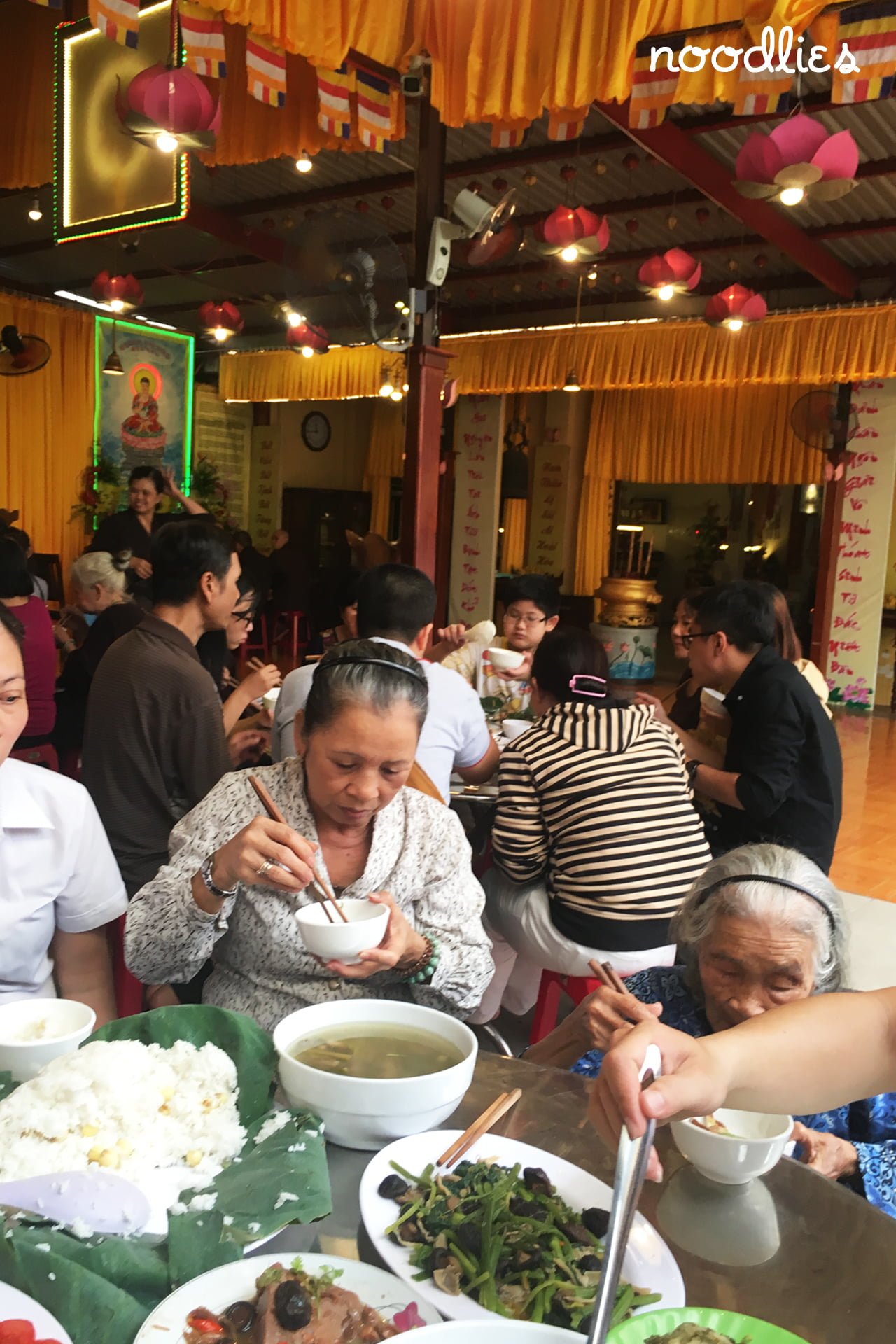
My favourite monk made sure I was seated at the funnest table, surrounded by a university professor, a rather hunky labourer and a 90yo woman who chatted with me in French the whole time (I don’t speak French). It was a hoot. The master’s sister, who was overseeing the more worldly side of the proceedings for the period, made sure I was kept well-supplied with food and told me proudly of the delicacies she had planned.
The tables were first furnished with huge bundles of wrapped cabbage leaves. These were opened to reveal white rice cooked with lotus seeds – the base of our banquet. Big basins of soup prepared with in-season herbs and leafy greens came next, followed by a number of delicious dishes, some everyday, others more exotic.
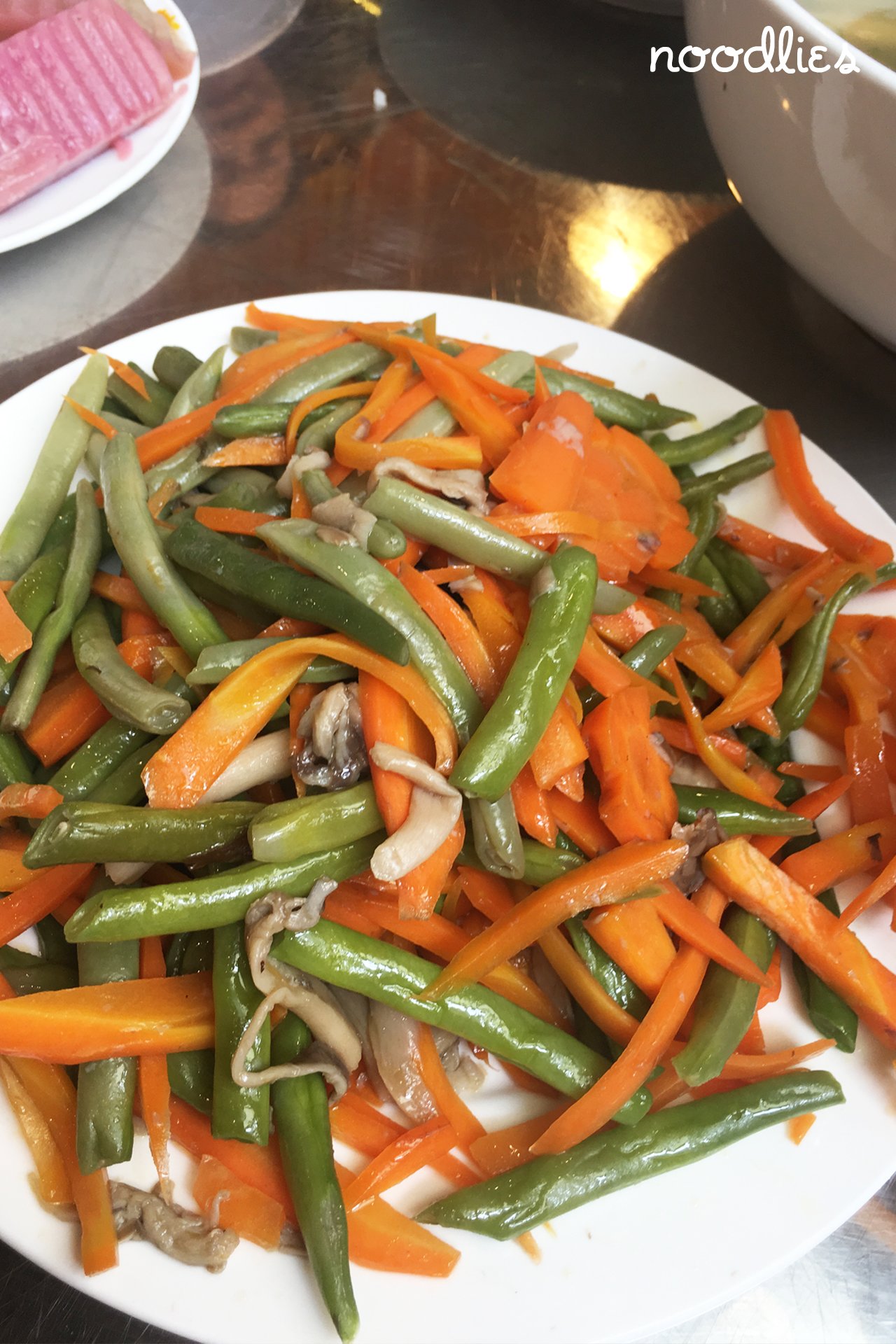
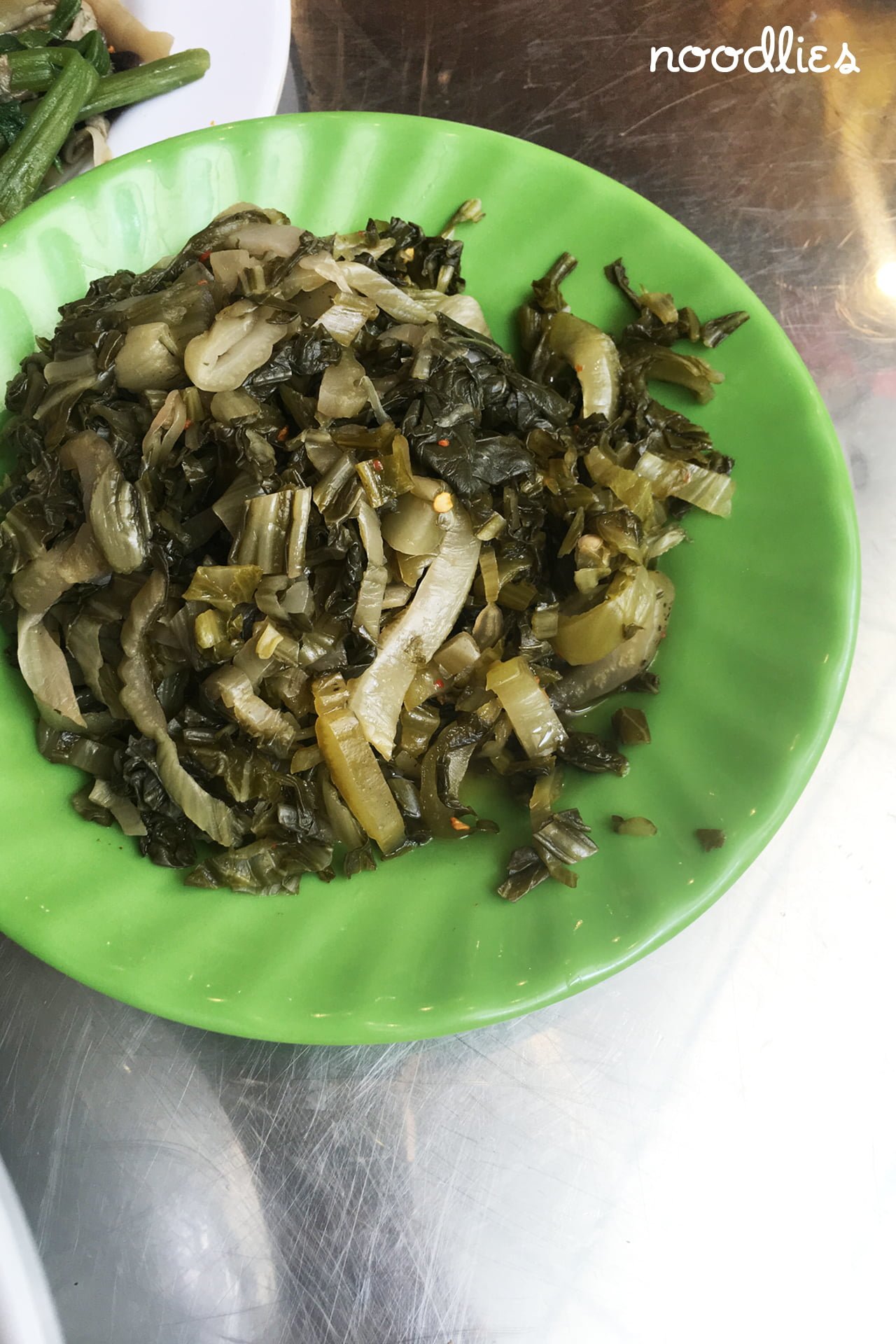
The everyday ones were still abundantly tasty. Beans fried with sliced carrots dipped in seasoned soya sauce (nuoc tuong), and pickled mustard greens (above) chopped up finely and gently fried were fantastic for cutting through the richer and more fatty dishes.
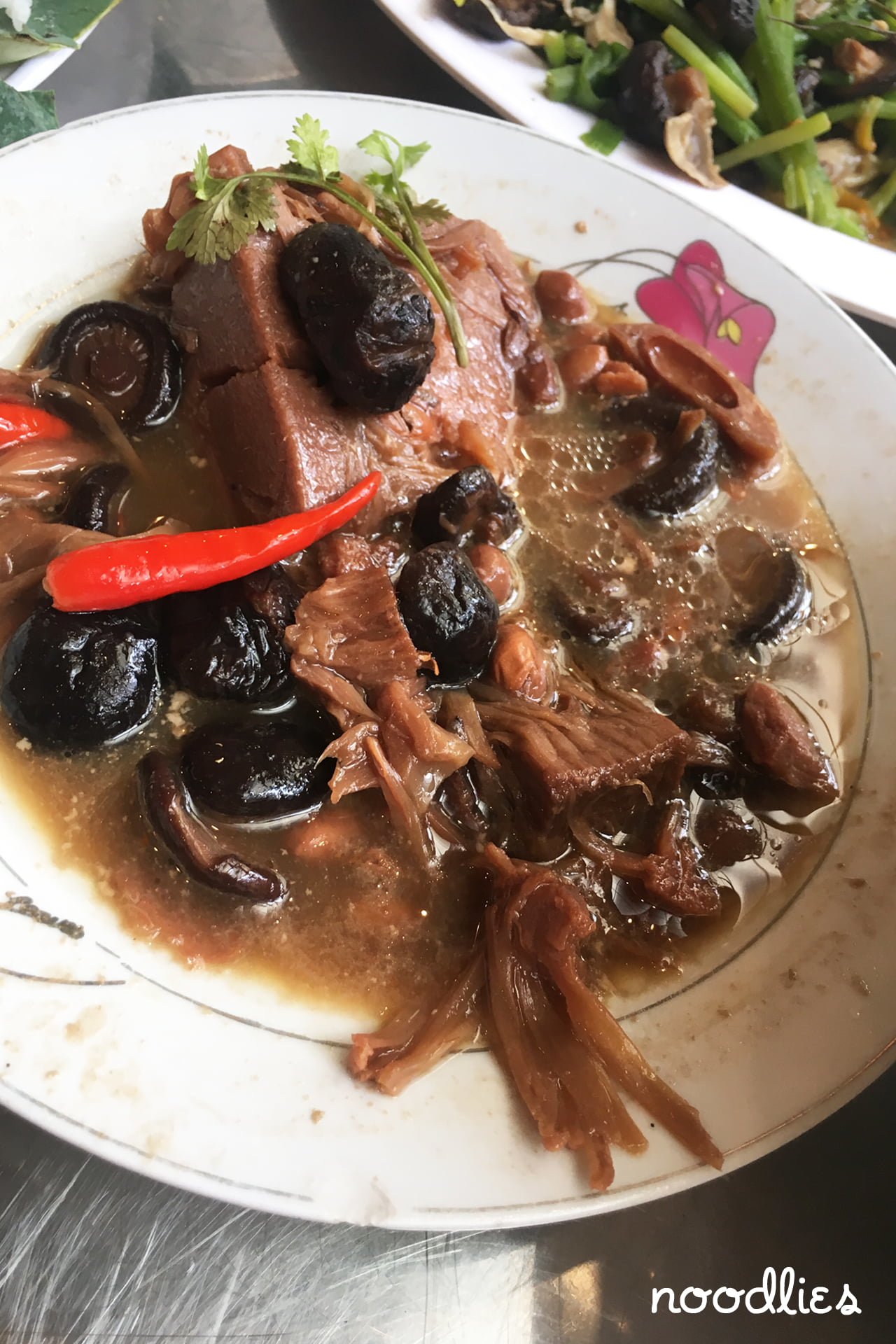
The more interesting dishes included stewed jackfruit (above)– this is served as a savoury dish, a Buddhist re-creation of the very typical stewed meat or fish that is served several times a week in Vietnamese homes (thit kho). The jackfruit makes for a rich and substantial meat substitute, providing an unusual and quite subtle flavour twist to a dish I normally view with boredom.
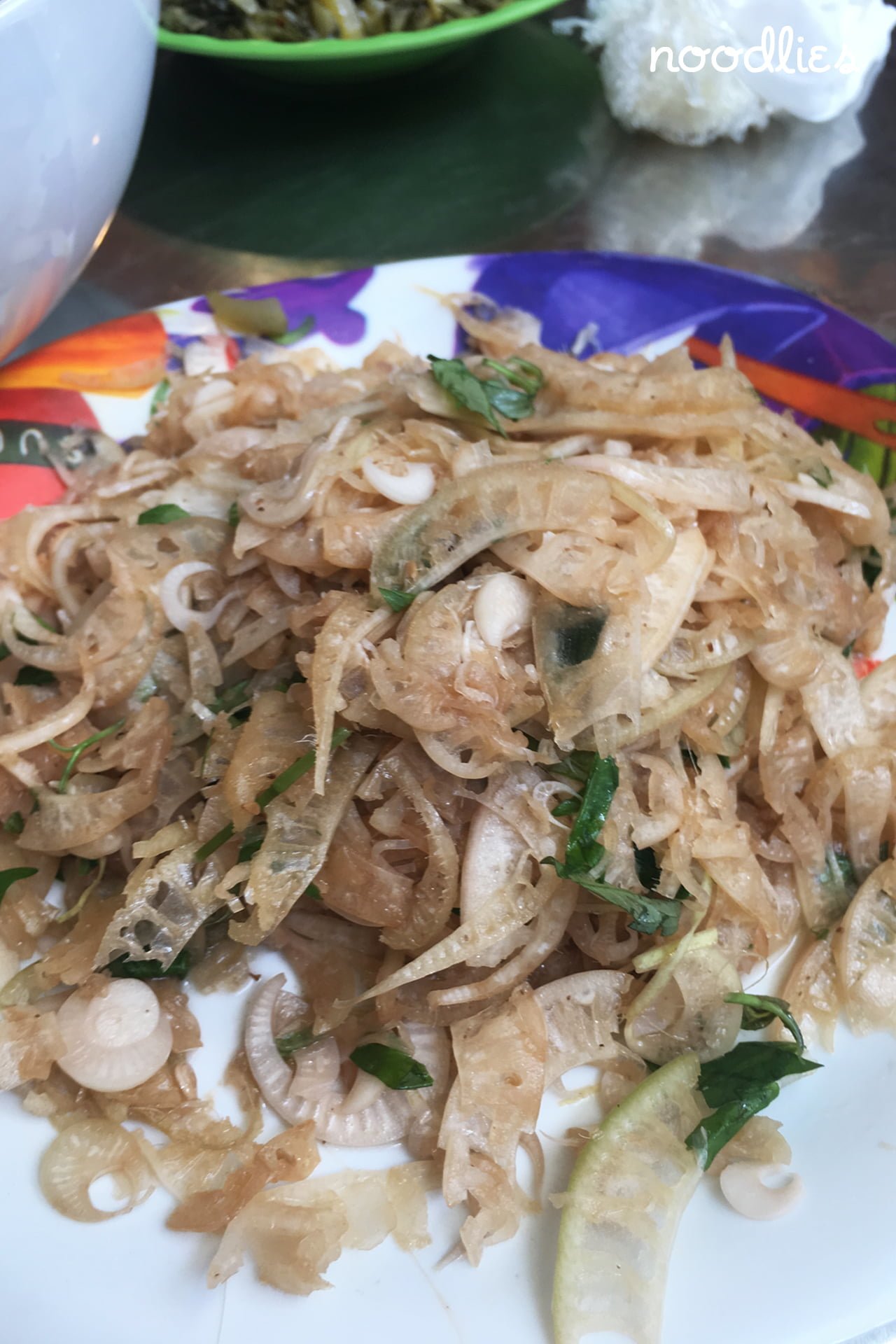
Also on offer was banana stalk salad (above). This is only the second time I have ever seen this dish served – the first was years ago in Bentre in the Mekong Delta when it was served up by one of Mr. Noodlies’ aunts at a family feast. This is a wonderful dish, and its rarity makes it even more exciting to eat. The stalk is sliced very finely and prepared in the manner of the more typical green papaya salad of Vietnamese cuisine. At temple the fish sauce is replaced with lots of lemon and sugar and salt, with a delicious scattering of fresh chilli. A fresh and palate-stimulating dish that I wish I could send you off to eat somewhere but I have no idea where.
These banquets are wonderful occasions, an opportunity for communal sharing and mixing, and for getting recipe ideas. A group of nuns at the next table were actually taking notes, and the deceased Master’s sister sent them home with a doggy bag.
There may well be tour companies in Vietnam that provide a temple eating experience – it is worth looking into (contact Noodlies if you are one). But if you wanted to do it yourself you only have to hang around a nearby temple for a few days and you will certainly be invited to eat – Buddhist monks and nuns in Vietnam are remarkably friendly and curious about visitors. If you are lucky enough to receive an invitation to try to remember to slip a contribution into the temple donations box before you go. Whatever you leave will be gratefully received and put to very good use.
Khuong Viet Temple
1355 Hoàng Sa, P. 5, Q. Tân Bình,TP. Hồ Chí Minh, Vietnam.
It is about 3 minutes from Pham Van Hai market, a local landmark that taxi drivers will know. It is about a 20 minute taxi ride from central Saigon – longer in peak hours. Temple is open from early morning till 11am, and then again from 2pm till around 9pm. Communal prayers are in the evening and all are welcome. Please wear polite clothing (sleeved shirts, no shorts,) when visiting religious places in Vietnam – this goes for men and women. Also, you will be grateful for wearing shoes that are easily slipped on and off (flip-flops are fine).

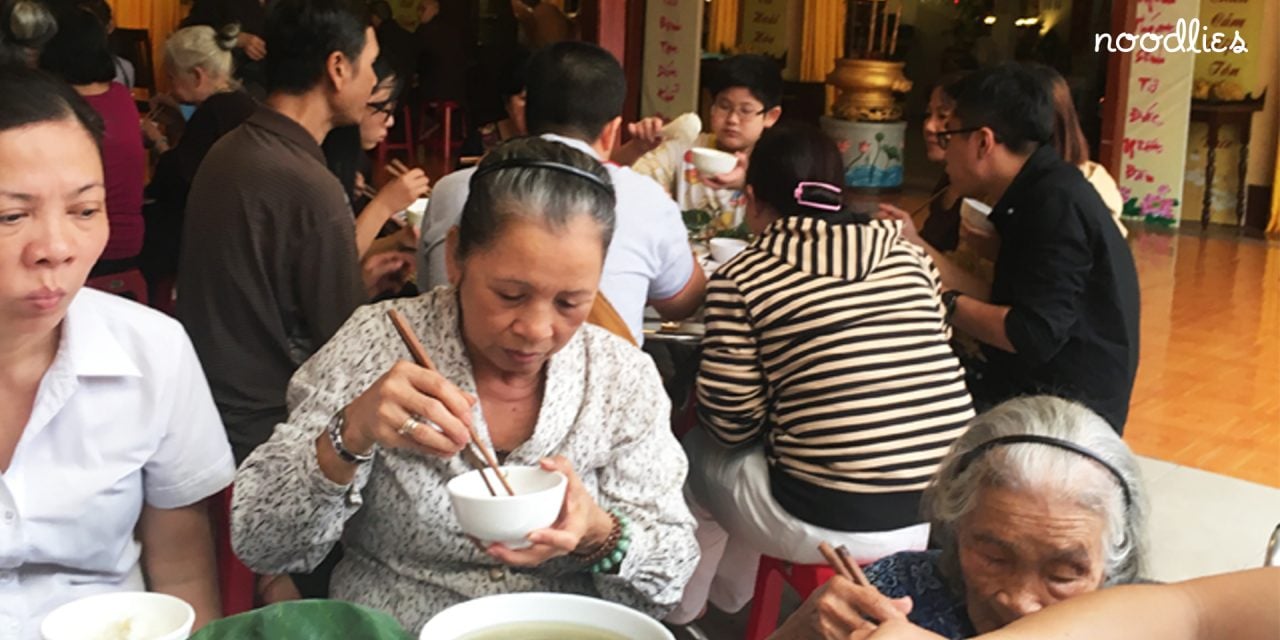

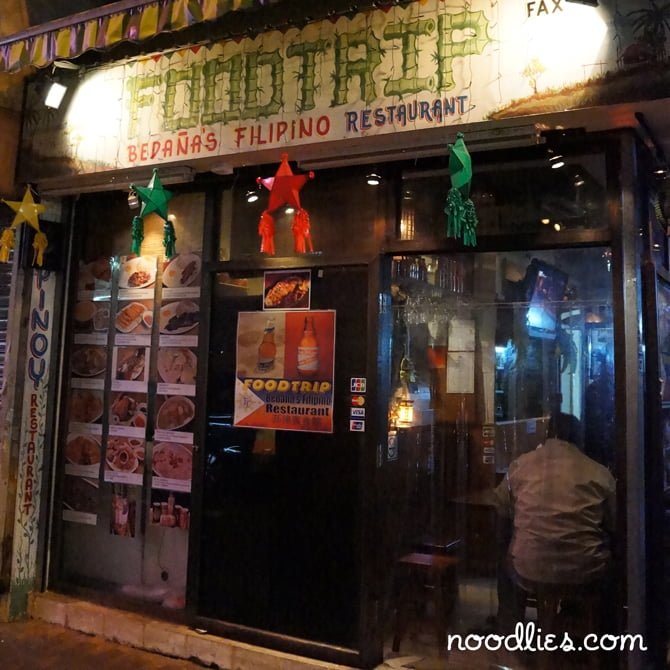
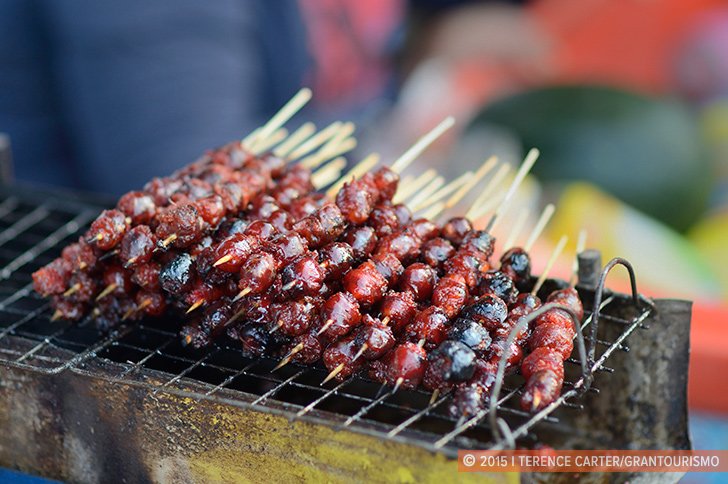
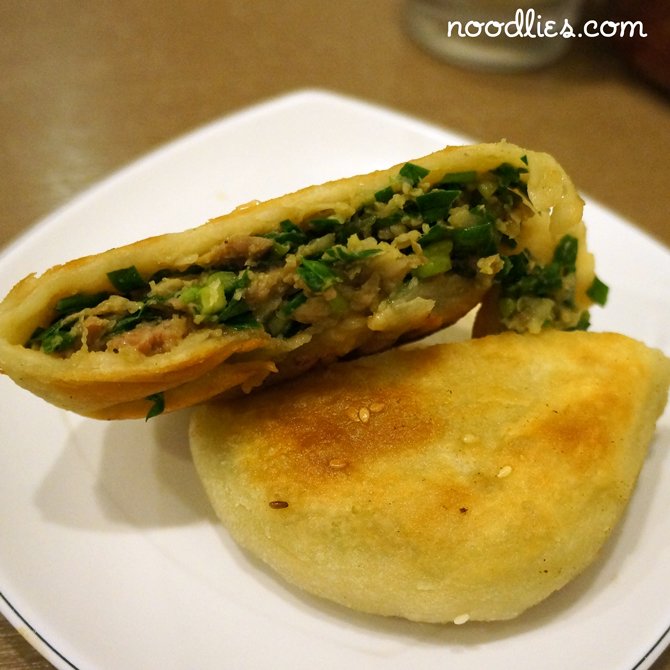

What a lovely tradition. Wish I’d known of it when we were there a couple of years back.